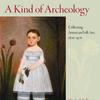Baltimore Museum of Art Will Deaccession 3 Major Artworks to Support Ambitious Equity Plan
- BALTIMORE, Maryland
- /
- October 02, 2020
The Baltimore Museum of Art (BMA) announced Friday details of its Endowment for the Future, an ambitious financial plan that will dedicate funds for the care of the collection and allow the museum to expand its ongoing diversity and equity programmatic initiatives by enacting greater structural change within the institution and increasing access for the community. As part of the plan, the BMA will maintain and increase salaries for staff throughout the museum, establish dedicated funds for DEAI programs, eliminate admission fees for special exhibitions, begin offering evening hours, and enhance its acquisition budget. The specifics for the Endowment for the Future, detailed below, emerged during the BMA’s temporary COVID-related shutdown, in alignment with the ongoing calls for radical thinking and change across the arts and culture sector. The BMA has successfully avoided staff layoffs and furloughs during this challenging period, and the plan reflects the museum’s focus on the future and its ability to continue to fulfill its mission to serve as a truly civic-minded institution. The Endowment for the Future was developed in accordance with the resolutions recently passed by the Association of Art Museum Directors.
To establish initial funds for the Endowment for the Future, the BMA will deaccession three works in its collection: 3 (1987-88) by Brice Marden, 1957-G (1957) by Clyfford Still, and The Last Supper (1986) by Andy Warhol. The paintings for deaccession were selected following extensive evaluation by the curatorial team to ensure that the narratives essential to the understanding of art history could continue to be told with depth and richness. The BMA has a significant post-war and modern art collection with important examples of Abstract Expressionism, Post-Minimalism, and late works by Warhol thanks to the work of former chief curator Brenda Richardson. The selection was reviewed and approved by the museum’s Board of Trustees on October 1, 2020.
The works will be sold by Sotheby’s this fall through public auction and private sale. Together, the three works are expected to generate approximately $65 million. Of this, $10 million will go to the museum’s acquisition fund, allowing it to rebalance its collection with an eye toward artworks made by women and artists of color, particularly as they interweave with the history and present of Baltimore. Along with a commitment to a more fulsome and accurate account of artistic achievement, the museum is committed to tracing socially grounded histories of western and non-western art through an emphasis on indigeneity, immigration, transnationalism, and the meetings of and clashes between cultures over time.
The museum will immediately dedicate $500,000 from the sale toward the creation and implementation of a comprehensive institutional plan for internal and external diversity, equity, accessibility, and inclusion (DEAI) initiatives and draw additional funds from the endowment for their continuation. The plan will be developed by a staff-led DEAI task force, drawn from across the institution with the assistance of industry-recognized consultants in the areas of racial and gender equity, disability, and indigeneity in the cultural sphere and Dr. Johnnetta Betsch Cole, the museum’s Special Counsel on Strategic Initiatives. Anticipated initiatives include in-depth staff training on critical subjects such as unconscious bias, accessibility, and cultural competency; increased professional development opportunities to help establish a pipeline to sustainable museum careers; and the development and enactment of an institutional DEAI roadmap for both internal equity and external engagement.
Approximately $54.5 million will be used to endow a fund for the direct care of the collection. The BMA expects this will generate approximately $2.5 million in income per year, which will be used to offset costs for the research, conservation, documentation, and exhibition of artworks, as well as the salaries for 46 staff, including curators, registrars, conservators, preparators, art-handlers, administrative staff, and fellows. By adding $2.5 million from this new endowment to the BMA’s $20 million operating budget, the museum will be able to reallocate existing funds towards other priorities, particularly to secure and increase salaries for the rest of the staff. This includes individuals in front-of-house positions throughout the museum as well as roles across education, marketing, advancement, facilities, and other administrative areas and departments. The BMA expects that it will have the resources to increase both existing and starting salaries in phases, which will be implemented incrementally leading up to and into fiscal year 2023 (July 1, 2022).
As part of the Endowment for the Future, the BMA will also draw approximately $590,000 annually toward eliminating admission fees for its special exhibitions and most public programs and extending its evening hours to 9 p.m. one weekday per week. These initiatives work to decrease barriers to experiencing the full range of the museum’s presentations and events and build on prior efforts, such as the opening of the BMA’s secondary space at Lexington Market, to meet its community’s needs for regular and consistent access. By reducing the financial burden of museum visitation, the BMA aims to reach an even wider audience and encourage new engagement with the institution.
“Over the past several years, the BMA has placed considerable focus on issues of diversity and equity, whether in the scope of our collection, the range of our exhibitions and programs, or the makeup of our board and staff. While we have made great strides, we—the board and leadership of the BMA—have also recognized that more needs to be done to support and encourage the team that makes our museum a welcoming and engaging space for the community and equally to continue our efforts to inspire and expand the audiences that experience our collections, exhibitions, and events,” said Clair Zamoiski Segal, the BMA’s Board Chair. “The Endowment for the Future is a realization of these long-standing conversations and priorities and is an important next step toward fulfilling our strategic vision and toward embracing DEAI issues in real and tangible ways.”
The BMA’s Endowment for the Future is developed in accordance with the resolutions that the Association of Art Museum Directors (AAMD) passed in April 2020 to refrain from censuring or sanctioning any museum that decides to use proceeds from deaccessioned art to pay for expenses associated with the direct care of its collections and/or to use restricted endowment funds, trusts, or donations for general operating expenses. As part of its fulfillment of AAMD’s resolution on direct care of the collection, the BMA has developed a policy outlining which expenses it considers to be part of direct care. The policy was approved by the Board of Trustees on September 16, 2020 and is publicly available on the museum’s website at artbma.org/collections/collections-care-policy.html. The policy places at its center the individuals who care for, interpret, and present the collection for the benefit of the community that the museum serves.
"The BMA’s Board of Trustees has been incredibly engaged as the museum continues to navigate the COVID-19 pandemic and respond to calls for greater equity within cultural institutions. Their generosity and leadership ensured that the BMA could maintain and support its staff during its shutdown and beyond,” said Christopher Bedford, the BMA’s Dorothy Wagner Wallis Director. “At the same time, the board and I recognize that to truly live up to our mission and values, we need to continue to allocate resources toward diversity and equity measures and that those measures need to address both the substance and content of our collections, exhibitions, and programs, as well as the concerns of the people that create and engage with them. While we were already considering a deaccession to support our efforts to re-envision our collection prior to COVID, the passage of AAMD’s resolutions gave us an opportunity to use the proceeds from the sale to enact greater change within our museum. The Endowment for the Future is very much, as its name indicates, about the future—the future that we want for the BMA and for our community and a future that is responsive to our evolving social contexts and the many voices calling for change.”







10100x100_c.jpg)








